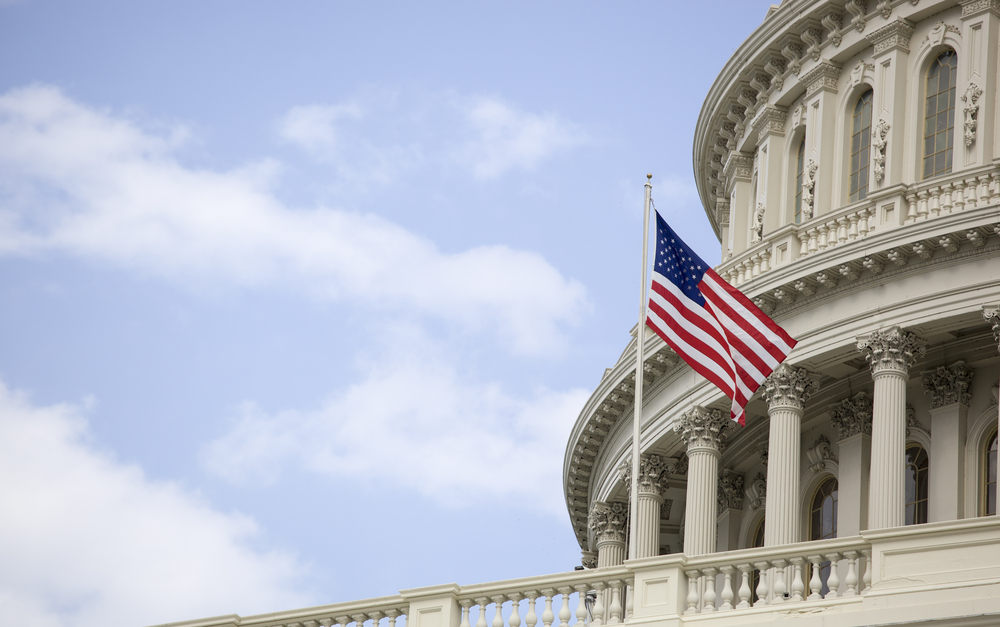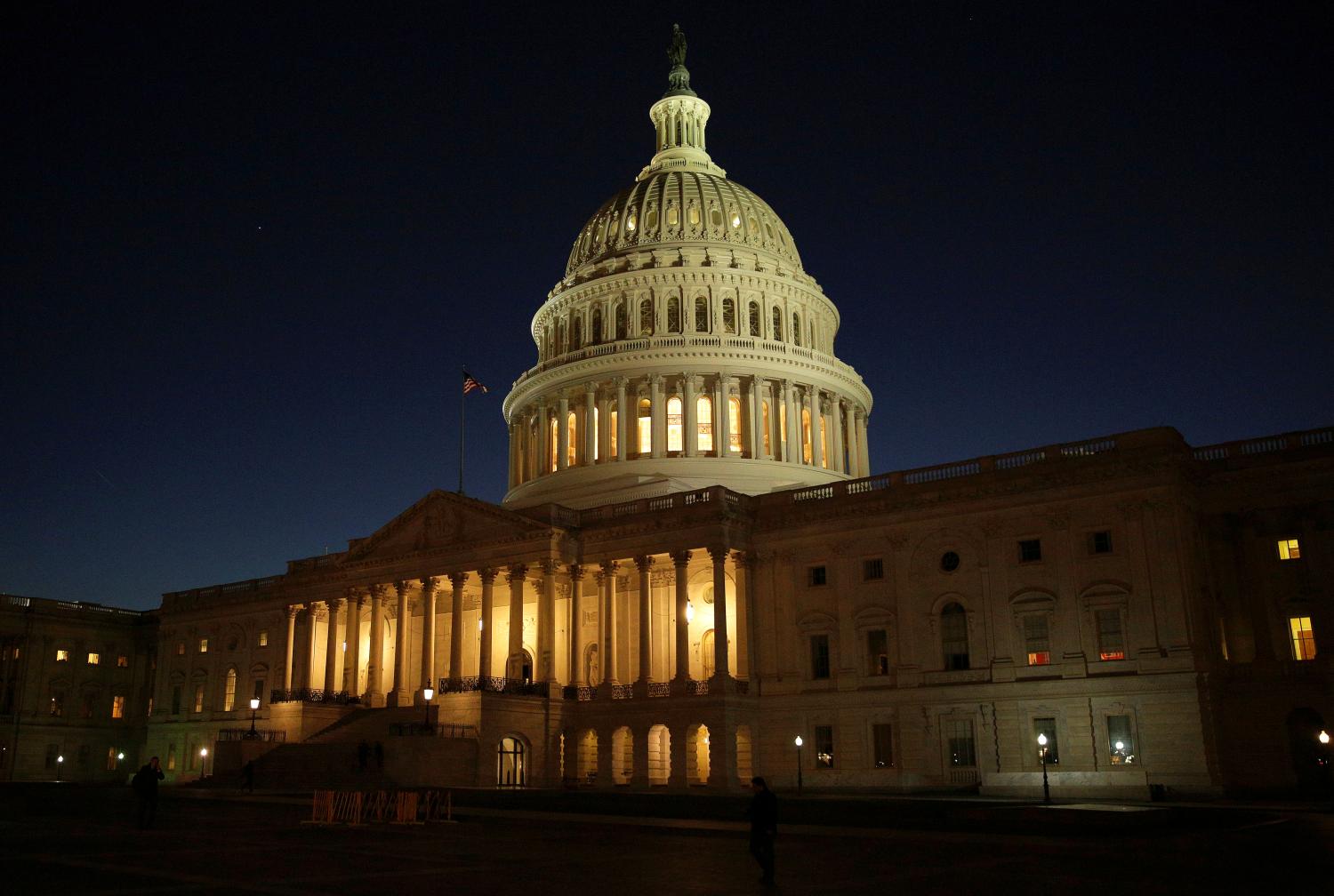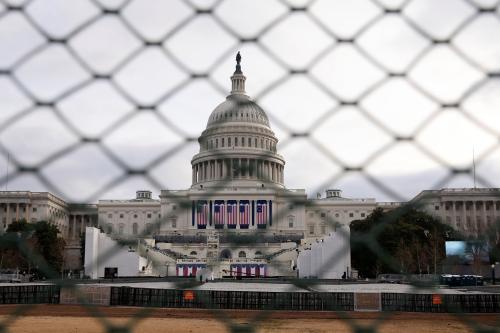On March 23, 2021, after final edits to this article, Sen. Patty Murray (D-Wash.) and Rep. Bobby Scott (D-Va.) introduced resolutions in the Senate and House, respectively, to disapprove a rule from the Equal Employment Opportunity Commission.
The stars are aligned for Democrats to use the Congressional Review Act (CRA) to disapprove federal agency regulations from the end of the Trump administration. But will they? With an April 4 deadline looming, members of Congress are running out of time to get the process started with the introduction of a resolution to disapprove a rule.
Several reasons have been offered to explain why no resolutions have been introduced yet. One common hypothesis is that this legislative tool is something Republicans use to overturn Democratic presidents’ rules, and not vice versa. Our new empirical research shows that Democrats, like Republicans, have introduced resolutions of disapproval under the CRA since it was enacted into law in 1996. The idea that Democrats do not use the CRA is incorrect and therefore does not help explain our current moment. We have to consider other explanations.
Why the CRA Matters Right Now
The Congressional Review Act allows Congress to disapprove federal agency rules using fast-track procedures during a special window of time following a rule’s issuance. Most importantly, this means that once a legislator introduces a resolution of disapproval, that resolution cannot be filibustered. If it is enacted, a disapproval resolution effectively wipes the relevant rule from the books, and the regulations revert back to what existed previously. Congress can thereby move much faster than a regulatory agency can using notice-and-comment rulemaking procedures. While Congress could always pass regular legislation to overturn an agency’s rule, that would require a filibuster-proof margin (at least for now). This is why the CRA offers an enticing procedural option for lawmakers interested in undoing an agency’s rule.
To be enacted, however, both chambers of Congress must pass the resolution and the president needs to sign it. Because a president is unlikely to sign a resolution disapproving a rule that was issued during his or her own administration or that of a president from the same party, the CRA has particular potential following a presidential election in which the incumbent or same-party nominee loses. If that happens, and if both chambers in Congress are aligned with the incoming president, the potential for enacted resolutions of disapproval increases dramatically.
As shown in Table 1, this configuration has occurred four times since the CRA was enacted in 1996.
| Presidential Inauguration Year | President | House Majority | Senate Majority |
|---|---|---|---|
| 1997 | Democrat | Republican | Republican |
| 2001 | Republican | Republican | Republican* |
| 2005 | Republican | Republican | Republican |
| 2009 | Democrat | Democrat | Democrat |
| 2013 | Democrat | Republican | Democrat |
| 2017 | Republican | Republican | Republican |
| 2021 | Democrat | Democrat | Democrat |
*Republicans held the majority from January 20, 2001 until June 6, 2001.
Joe Biden’s election as president and Democrat majorities in the House and Senate give legislators the opportunity to disapprove rules leftover from an administration of the opposite party using the CRA.
As early as 2019, one of us wrote about how the potential for a loss in the November 2020 election placed pressure on the Trump administration to finish up its highest-priority regulations in time to insulate them from the reach of Congress using the CRA. Congress can only reach back so far to undo rules using the CRA. In the current Congress, rules published before August 21, 2020 are generally out of reach.
The GW Regulatory Studies Center estimates that Congress can reach back to at least 1,490 Trump-era regulatory actions using the CRA, thanks in part to a historically active final few months of regulatory activity in the Trump administration. In addition to many rules that are routine and non-controversial, this number includes “controversial and consequential” immigration and other late-breaking rules. Advocacy groups have offered a list of targets for the CRA in these early days of the Biden administration.
Is the CRA a Tool Democrats Will Use?
During his presidential campaign, candidate Biden often referred to Trump-era regulations that he would undo or amend once in office. Working with Congress to disapprove a rule under the CRA is just one method a new president can use to unwind the actions of a prior administration. Despite elevated expectations that the 117th Congress and the new administration would use the CRA to roll back Trump rules, twelve weeks into the new Congress, no resolutions of disapproval have been introduced in either the House or the Senate. In comparison, by this time in 2017, Republicans had introduced 61 resolutions of disapproval targeting 34 rules—14 of which were eventually disapproved under the CRA.
One theory for this lack of action is that Democrats are not disposed to use the Congressional Review Act. Washington Post columnist Helaine Olen attributes this hesitation, in part, to philosophical grounds: “They believe the CRA has an anti-regulatory bias, and that any use of it, no matter how well meant, simply legitimizes a fundamentally bad law. In other words, tit-for-tat politics will normalize it.”
In addition, if Democrats have more regulatory ambition in an area than do Republicans, they might also be more concerned than Republicans about the effects of the “substantially the same” bar that attaches to a rule once it has been disapproved. After a rule is disapproved under the CRA, an agency is barred from promulgating a rule that is “substantially the same” as the disapproved rule, unless Congress authorizes it to proceed. Much ink has been spilled about the chilling effect of this downstream regulatory bar, which has not been tested in court.
In the Trump administration, when the CRA was used to disapprove a historic number of rules, some called for the CRA to be repealed and emphasized its ability to do damage to the regulatory state. These views helped form what is now the conventional wisdom: that CRA disapprovals are a tool for Republicans, not Democrats.
New Empirical Analysis Shows Democrats Use the CRA
Others, though, led by Sam Batkins, have pointed out that Democrats use the CRA more than this conventional wisdom suggests. Our new working paper confirms this observation and grounds the findings in the political science literature on legislative organization. In our work, we broaden the focus from successful disapproval of rules to include interim steps like the introduction of resolutions and how far a resolution makes it through the legislative process. Widening the lens in this manner reveals that Democrats do indeed use the CRA to introduce disapproval resolutions, so much so that it is clear that the tool has been institutionalized across Congress, not just for Republicans. Instead, across party affiliation, we find that when a party has control of Congress its members are more likely to use the CRA—partly as a messaging vehicle meant to advertise their party’s record on regulatory policymaking.
For example, since 1996, Democrats have been responsible for 16% of resolutions introduced when the party was in the minority. However, when the party has held the majority, Democrats have introduced half of the resolutions of disapproval—oftentimes accounting for all or nearly all of the resolutions introduced in a particular session of Congress.
Figure 1 shows how the share of resolutions introduced by each party has changed over time. This, combined with information about the sitting president’s party, shows that legislators mostly introduce disapproval resolutions when the president is of the opposite party.
Our paper also shows that legislators introduce resolutions outside of the window in which those resolutions have any real chance of being enacted. This runs counter to another aspect of the conventional wisdom—that the CRA is only used when the stars align. In fact, legislators routinely introduce resolutions regardless of whether they are likely to be signed into law. For example, in the 114th Congress, Republicans targeted 12 Obama administration rules for disapproval. These included signature regulatory priorities for the administration like the Environmental Protection Agency’s Waters of the United States rulemaking, the National Labor Relations Board’s Representation-Case Procedures, and the Department of Labor’s Fiduciary Rule. Members of Congress introducing and voting on these resolutions were surely aware that President Obama would veto any resolution attempting to eliminate these signature regulatory actions.
Regulations targeted by Democrats towards the end of the Trump administration include contentious actions like the Federal Communication Commission’s Restoring Internet Freedom Order, the Environmental Protection Agency’s Repeal of the Clean Power Plan, and the Department of Education’s rewrite of its Obama-era Borrower Defense rule. Such use of the CRA demonstrates its perceived value for members of Congress beyond successful disapproval of rules.
Of the 213 resolutions introduced to date, Democrats have only introduced 52 of them. As shown in Figure 2, this difference is partly driven by the unprecedented outlier of 70 resolutions introduced by Republicans in the 115th Congress at the start of the Trump administration. Those 70 resolutions are over 40% of the 161 total Republican resolutions.
Therefore, contrary to the conventional wisdom, our findings confirm that—while Republicans have used the tool more often—legislators of both parties have historically found the CRA to be a useful tool beyond the actual disapproval of rules.
This is consistent with the purposes of the CRA, as articulated by those who oversaw its enactment. Writing in 1996, Senator Don Nickles (R-OK) explained that the CRA was a response to changing dynamics between Congress and the Executive Branch:
“As more and more of Congress’ legislative functions have been delegated to federal regulatory agencies, many have complained that Congress has effectively abdicated its constitutional role as the national legislature in allowing federal agencies so much latitude in implementing and interpreting congressional enactments. In many cases, this criticism is well founded. Our constitutional scheme creates a delicate balance between the appropriate roles of the Congress in enacting laws, and the Executive Branch in implementing those laws. This legislation will help to redress the balance, reclaiming for Congress some of its policymaking authority, without at the same time requiring Congress to become a super regulatory agency.”
This sentiment was echoed by another sponsor of the law, Senator Harry Reid (D-NV) at his farewell address in 2016. He counted the CRA as one of his signature achievements, despite the objections of some of his Democratic colleagues:
“We knew the administration would change and it would affect every President, Democratic and Republican. It was called the Congressional Review Act. What that said is the President promulgates a regulation and Congress has a chance to look it over to see if it is too burdensome, too costly, too unfair. We have done that quite a few times.”
He recognized that the CRA was “great when we had Republican Presidents, not so great when we had Democratic Presidents, but it was fair.” Our research confirms that this bipartisan vision of the legislation has taken root.
What Else Might Explain the State of Play?
Having shown that Democrats do use the CRA as a legislative tool, and therefore do not seem to have the general aversion to it that some suggest they do or should, what else might explain the lack of introduced resolutions?
It is not that they are technically challenging to write. As David Dayen notes in The American Prospect: “These resolutions don’t require much drafting, you just name the regulation targeted for repeal.” In addition, multiple rules cannot be bundled together and each resolution must refer to a rule in its entirety. They are, indeed, quite spare.
A closer look at the “substantially the same” bar is worthwhile. As explained by researchers at the Congressional Research Service, two rules—one from the U.S. Department of Labor and one from the U.S. Securities and Exchange Commission—have now been promulgated that are related to ones that were disapproved in the Trump administration. In their rules, the agencies offered explanations for why the new rule was not “substantially the same” as the one that was disapproved. So far, these new rules have remained standing. If the CRA initially froze agency willingness to issue related—but arguably not “substantially the same”—rules following an enacted disapproval, there is evidence of a thaw.
In addition, for at least some of the Trump regulations, such as the public charge rule issued by the U.S. Department of Homeland Security, it’s plausible that the “substantially the same” bar could have been viewed by Democrats as a feature, rather than a bug. That rule expanded the types of assistance that the government could use as a reason to deny a visa on the grounds that the applicant “is likely at any time to become a public charge.” While the “substantially the same” test could potentially trip up future regulations that Democrats would support, the risk might have been worth it to prohibit the Trump approach from being taken again in the future.
Nevertheless, it would be reasonable to take a careful approach to deciding which rules to target for disapproval. While the “substantially the same” test is clearly not an absolute bar to future rulemaking, it poses enough of a threat that some consideration is due. If Politico’s reporting is correct that Democrats are using this time to deliberate about the best approach, the consequences of the “substantially the same” bar could well be part of those discussions.
Such deliberations might include more fundamental questions about the content of the rules. Democrats’ thin margin in the Senate means that even party-line votes could be challenging. This may well shrink the number of rules for which disapproval is feasible.
Floor time scarcity is also a reasonable explanation. The impeachment proceedings, processing nominations and confirmations for new Biden officials, and enactment of the American Rescue Plan have all placed significant demands on both committee and floor time. Time is a precious commodity in Congress, and each disapproval resolution is subject to up to ten hours of debate in the Senate.
Another possibility is that some of the rules that Democrats would have potentially targeted for disapproval have already been enjoined by courts. Given floor time constraints, legislators might prefer to defer to the courts, despite some risk that those injunctions could be overturned upon reconsideration or appeal. Given the generally poor fate of Trump administration rules that end up in litigation, this is not an unreasonable posture. It’s also possible that legislators might prefer the political features of having courts, rather than Congress, nullify these rules. The result could be fewer good CRA disapproval targets than predicted. The public charge rule described above, for example, is in this category.
In addition, the CRA might appear a somewhat mind-bending tool to use on Trump rules that were, themselves, deregulatory. What does it mean to roll back a deregulatory rule? This is not a problem under the CRA, however, which states that when a rule is disapproved it “shall be treated as though such rule had never taken effect.” A disapproved rule—whether deregulatory or regulatory in direction—reverts back to the regulatory text that was in place prior to the issuance of the disapproved rule.
Lastly, there’s still time. Our estimate is that members of Congress have until April 4, 2021 to introduce a resolution of disapproval on rules issued in the Trump administration, so stay tuned. Congress doesn’t have to act on the resolutions by then, the deadline is just to get the ball rolling. We may see a flurry of resolutions filed under the wire.
Our research has shown that Democrats, like Republicans, have a history of introducing disapproval resolutions under the CRA. This unsettles the conventional wisdom that the CRA is a tool for Republicans. Instead, we find that the introduction of CRA disapprovals is an institutionalized aspect of Congress on both sides of the aisle. Whether Democrats choose to undo particular Trump rules using this tool or not, our work suggests that they are likely to turn to the CRA in the future.
The authors did not receive financial support from any firm or person for this article or from any firm or person with a financial or political interest in this article. They are currently not officers, directors, or board members of any organization with an interest in this article.
The Brookings Institution is committed to quality, independence, and impact.
We are supported by a diverse array of funders. In line with our values and policies, each Brookings publication represents the sole views of its author(s).










